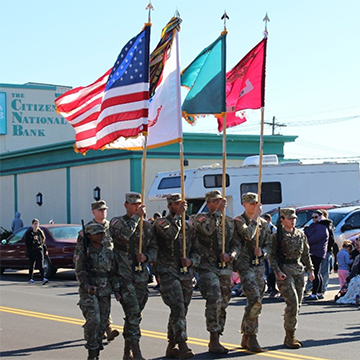This month, we observe Veterans Day, a time to celebrate those who’ve answered the call of duty and show them our appreciation.
I spent 35 years in uniform, a privilege that gave me a front-row seat to the selfless work the many millions of veterans in our nation have performed at home and overseas.
Now, as a healthcare executive, the best way I know to show my appreciation for their service and sacrifice is to empower the delivery of safe, effective care by working ceaselessly to support implementation of a single modern electronic health record across the federal space. That means one interoperable system for the Department of Defense, Department of Homeland Security’s U.S. Coast Guard and Department of Veterans Affairs.
Simply put, a single, modern EHR will safeguard a lifetime of seamless, safe and effective care for our veterans by breaking down barriers to access and ensuring providers always have a complete patient picture no matter where or when a veteran seeks care.
I realize many of you likely care for patients in a private setting. So why care about health IT innovation in the federal space?
First, as a nation, we have a shared interest in our moral obligation to care for those who’ve borne the battle, to paraphrase VA’s motto. I began my career as a young aeromedical evacuation pilot transporting battlefield wounded, and later served as a senior leader whose charges included leading the Combat Healthcare System in Iraq for 15 months. Through those experiences, I became intimately familiar with the toll military service takes on individual health, and I firmly believe we must repay those who’ve served with world-class care.
Second, health IT innovation in the federal space helps safeguard better healthcare for everyone—whether they’ve served in uniform or not. Innovation is a two-way street between public and private healthcare systems. Private industry, for example, has driven many innovations that save troops on the modern battlefield, and VA has made advances in areas like prosthetics that now benefit thousands of civilians. What moves the ball forward for care in the federal space moves the ball forward for us all.
I became a firm believer in the value of modern EHRs in 2017 when I oversaw implementation of MHS Genesis at the DoD’s first facility to launch the system—Madigan Army Medical Center in Tacoma, Wash. It is the same shared platform we are now implementing across VA.
This modern EHR:
- Bolsters veteran safety by ensuring providers always have the full patient picture, no matter where care is rendered. Long gone will be the days of service members lugging a backpack-worth of paper medical records to VA. This placed a heavy administrative burden on veterans and often led to lost records and clerical errors. Now, VA providers will have immediate access to a veteran’s full medical history from the first day they no longer wear the uniform, including all service-related injuries, potential exposure to toxic substances, allergies, test results and other nuanced but important medical information to drive safe and effective care.
- Breaks down barriers to care by empowering veterans to seek care wherever is convenient, fast or best meets their unique needs. This is especially useful for veterans who live far from a VA facility or near a busy facility with long appointment wait times.
- Assists providers by providing modern tools including opioid misuse and suicide risk assessments within the EHR. Other powerful capabilities include barcode medication scanning, a technology pioneered by VA for in-patient care, which is now being expanded to all care settings, to ensure every patient receives the right medications, in the right doses, at the right times.
VA is making leaps and bounds in efforts to modernize veteran care. However, not everyone realizes that VA’s adoption of a common EHR is just the latest in a long-standing tradition of innovation that has benefitted veterans and civilian patients alike. Consider that VA was the first healthcare system in the world to perform a successful heart transplant in 1968—a procedure many thousands now benefit from the world over.
VA was also the first healthcare system in the world to adopt an EHR, VistA, which has served the institution well for several decades but has fallen behind the times. Thus, we are forging ahead to bring modern health IT to VA, the largest healthcare system in the country, which cares for more than 9 million patients.
This Veterans Day, not only do I call on all my fellow healthcare executives to personally thank a veteran. Also, make good on our national promise to care for them—and all patients in our charge—by being unyielding in your commitment to innovation, learning and thought leadership.
Pat Sargent, FACHE, is general manager, Oracle Cerner Government Services, and a retired major general of the Army.

